Firefighter Invents Tool to Fight EV Fires More Safely
The Tactical Thermal Reducing Cylinder
Electric vehicles are far less likely to burst into flames than internal combustion engine cars, according to Allied World Insurance.* The problem is if they do catch fire, they're significantly more difficult to put out. A burning ICE car might require 1,000 gallons of water to extinguish. A burning EV "can require up to forty times as much" water, according to the International Technical Committee for the Prevention and Extinction of Fire (CTIF).
Part of the difficult of EV fires relates to a phrase realtors know well: Location, location, location. An ICE car typically burns in the engine compartment. Firefighters need to pop the hood, then douse the engine compartment with water. EVs, however, burn from the bottom. The battery arrays are always on the underside of the car, by design, for weight stability while driving. And for the safety of the passengers, the passenger cabins have robust underbody shields. In other words, EV batteries cannot be effectively doused from the top.

What firefighters have learned to do is "crib" an EV: Jacking it up on one side, to give their hoses access to the battery arrays.
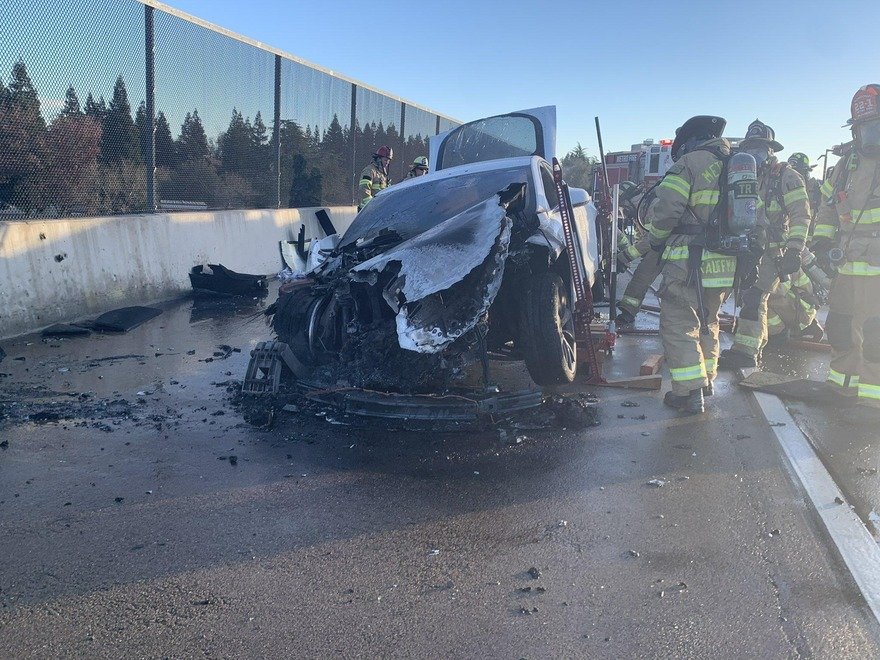
Cribbing isn't a quick operation; firefighters have to maneuver chocks and jacks into place to carefully and securely crib the vehicle. The entire time, they're exposed to toxic fumes and the fire itself, with the risk of a battery exploding at any moment.
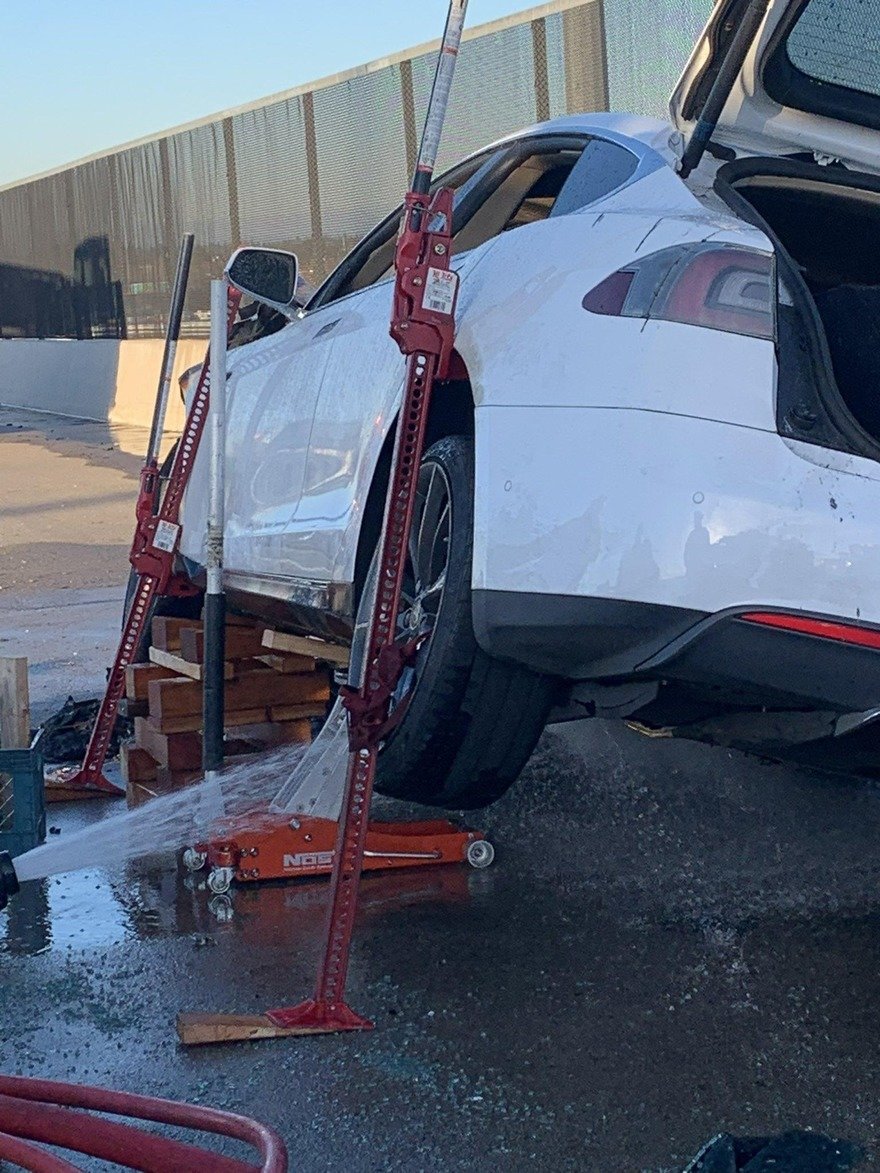
Once the car is cribbed, firefighters still have to get incredibly close to the battery array in order to douse it.
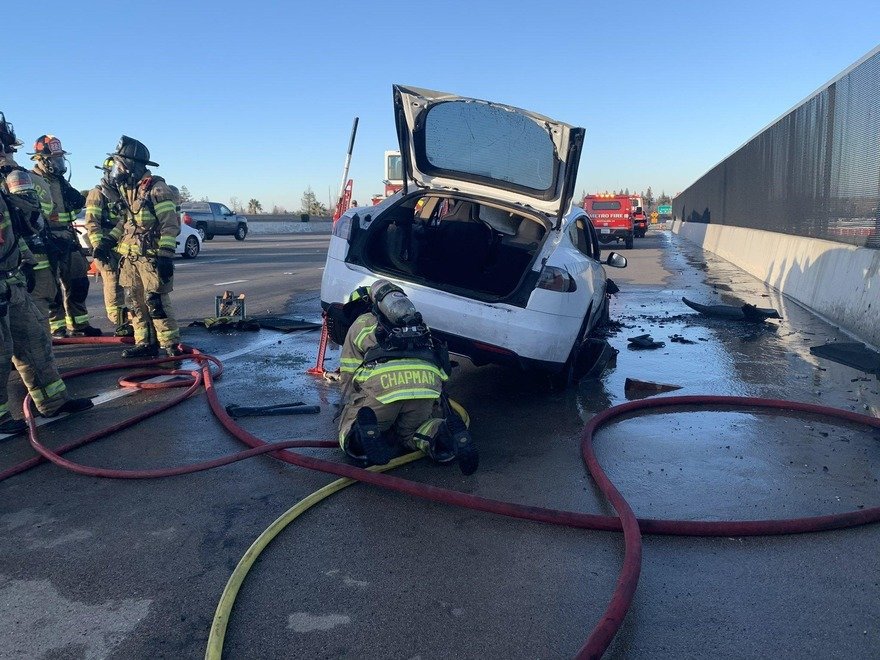
During an EV fire Ryan Twombly, an ex-Marine and Massachusetts firefighter, found himself and his crew "operating on the nozzle less than 3 feet from the undercarriage" of the burning EV. After the event, they began to brainstorm a safer, less exposed way to do it.
It took two years to develop, but Twombly and his team created the Tactical Thermal Reducing Cylinder (TTRC).
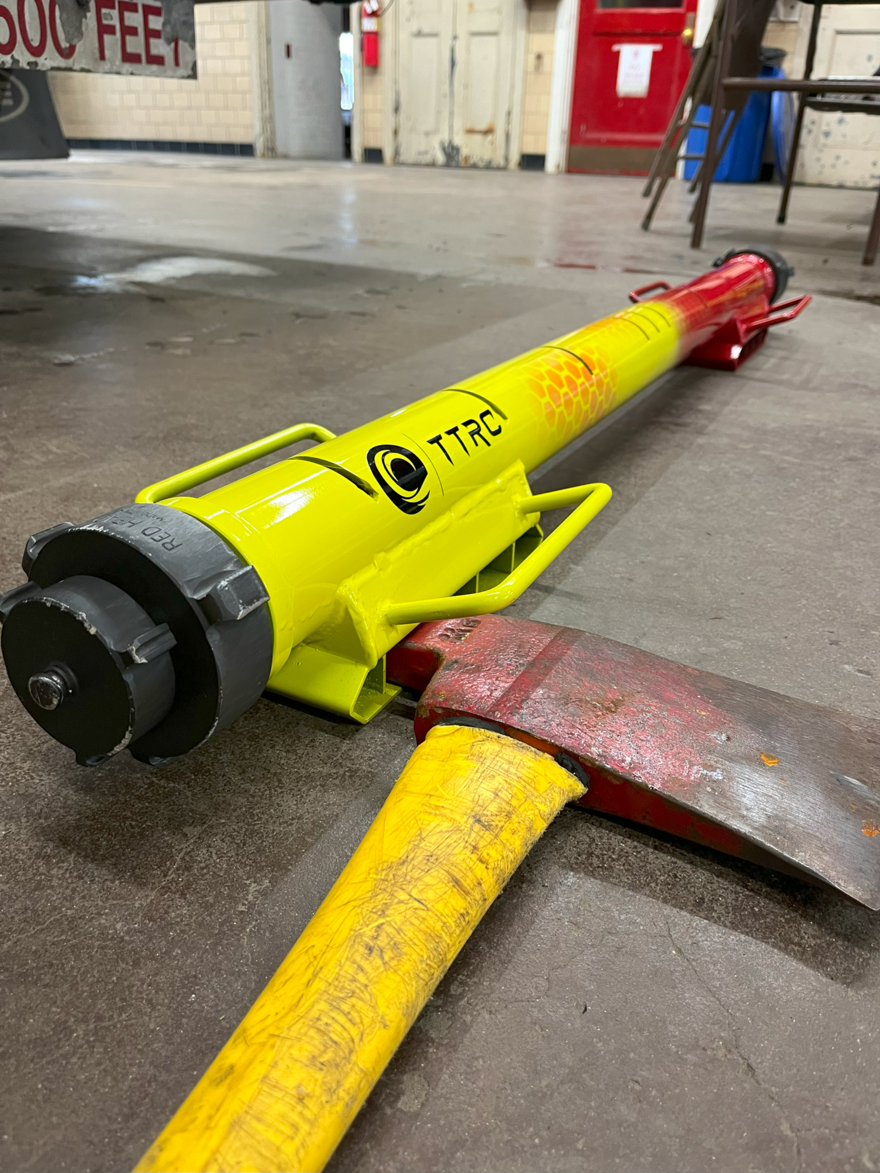
The TTRC is a robust steel pipe with hose connections on either end. Stabilizing feet welded to the pipe provide orientation and prevent rolling; slanted slits placed along the top marshal the incoming water into a powerful convex spray, which can deliver 800 gallons per minute at up to 200 psi.
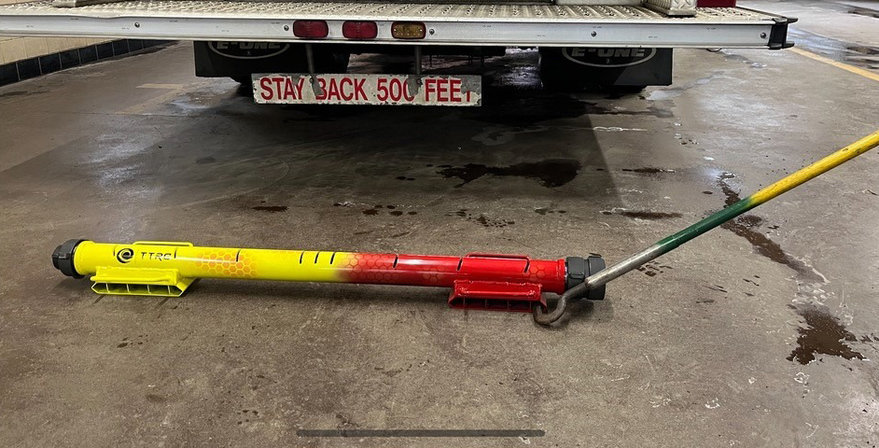
It is, essentially, an extremely high-powered sprinkler:
The invention completely changes the game for firefighters. The vehicle no longer needs to be cribbed; instead the TTRC is slid underneath it, and firefighters can stand well clear while the TTRC does its thing.
The TTRC is now standard equipment on all engines in Twombly's Hingham Fire Department, and has been adopted by over a dozen other Massachusetts fire departments. Additionally Twombly has formed a company, Fire Ground Tactical, to commercialize the tool.
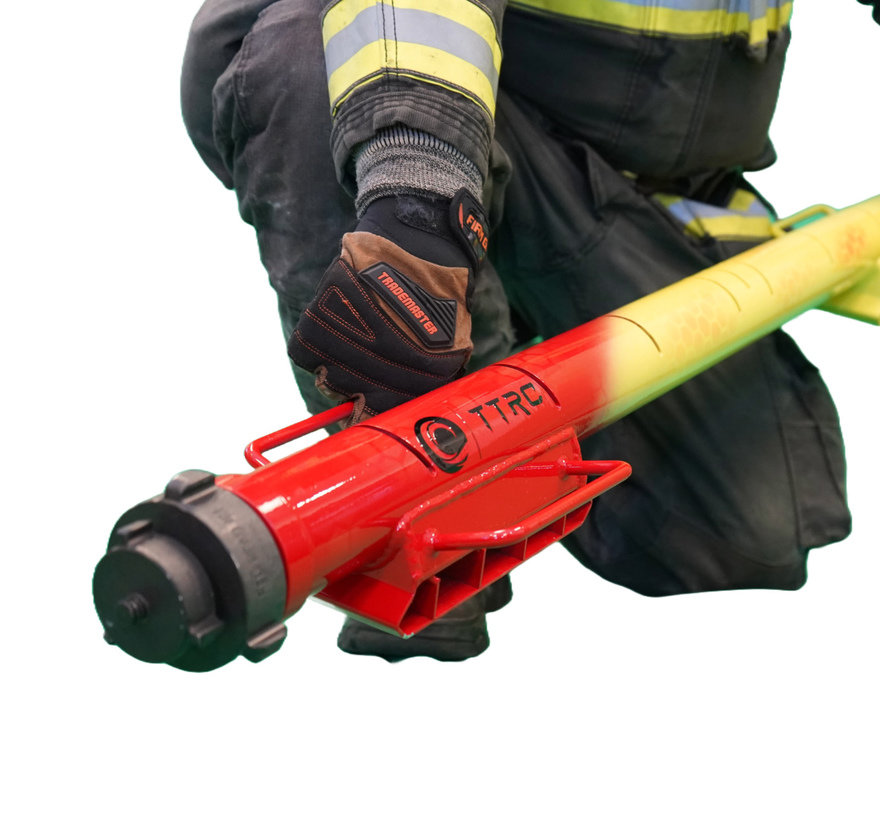
---
*The stats are about 25 fires per 100,000 EVs sold, or 0.025%. With ICE cars, it's about 1,530 fires per 100,000 sold, or 1.53%. Overall, less than 2% of car fires are EVs.
-
o2Favorite This
-
Q2Comment
K
{Welcome
Create a Core77 Account
Already have an account? Sign In
By creating a Core77 account you confirm that you accept the Terms of Use
K
Reset Password
Please enter your email and we will send an email to reset your password.


Comments
That firefighter has to get very close to push the TTRC under the vehicle. Perhaps spring-loaded wheels mounted on the feet would allow it to be pushed in from further away. The reactive force of the water could be used to compress the springs and small spikes could be used to fix the TTRC?
I think you mean that even if there were equal numbers of EVs and ICE cars on the road, less than 2% of fires would be EVs. as it is, it must be MUCH less than 2%.